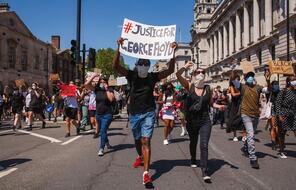
Exploring Contemporary Experiences of Policing and Racial Injustice
At a Glance
Language
English — USSubject
- History
- Social Studies
Grade
6–12- Democracy & Civic Engagement
- Racism
Overview
About This Mini-Lesson
This mini-lesson introduces students to some of the contemporary issues around policing and racial injustice in the United States. Students use their head, heart, and conscience to engage with six different sources, each of which offers a different vantage point.
Activities
Activities
Extension Activities
Materials and Downloads
Quick Downloads
Resources from Other Organizations
Exploring Contemporary Experiences of Policing and Racial Injustice
The History of Slave Patrols, Black Codes, and Vagrancy Laws
Creating a Society That Ensures Safety for All
Unlimited Access to Learning. More Added Every Month.
Facing History & Ourselves is designed for educators who want to help students explore identity, think critically, grow emotionally, act ethically, and participate in civic life. It’s hard work, so we’ve developed some go-to professional learning opportunities to help you along the way.
Exploring ELA Text Selection with Julia Torres
On-Demand

Working for Justice, Equity and Civic Agency in Our Schools: A Conversation with Clint Smith
On-Demand

Centering Student Voices to Build Community and Agency
On-Demand















